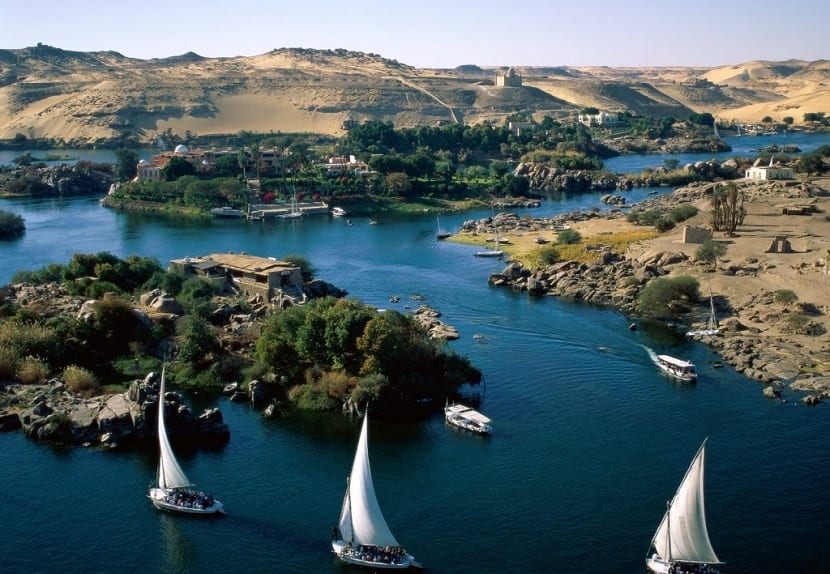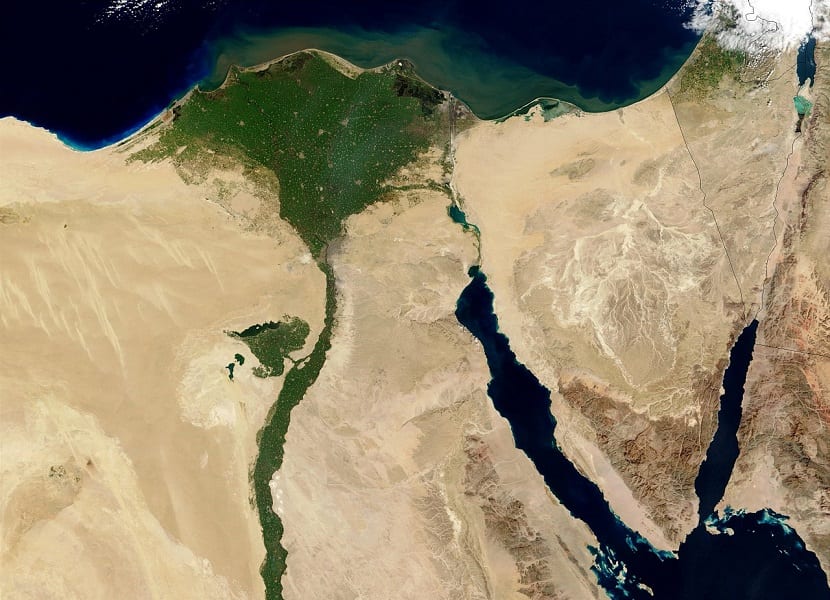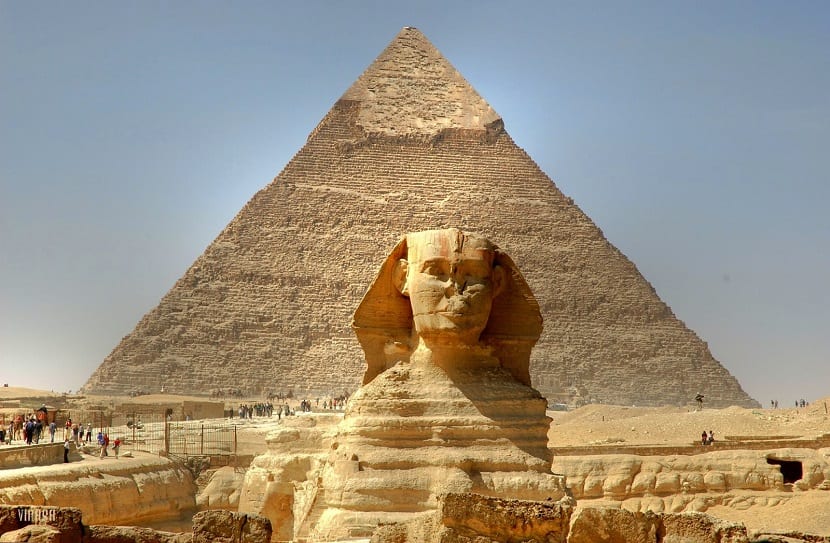
To speak of Egypt is to speak of nile river valley. This river is born in the plateau region of the Great African Lakes, traveling more than 6000 kilometers before pouring its water into the Mediterranean Sea. Its basin is divided into two parts: one is constituted by the upper and middle courses of the river and the other is formed by the lower course of the Nile. The upper and middle courses differ in latitude from Khartoum, capital of Sudan, passing through a bucket open to the north. His climate It is typical of West and Saharan Africa, as it has desert, steppe and savanna areas. The lower part of the river or also known as the northern part, corresponds to Egypt.
In Egypt, the river after having passed the 6 Nile Falls medium and having enriched its flow with the contribution of the waters of the Ethiopian massif, it gives rise to a strip of 2 to 25 km wide that constitutes an oasis and that extends to the Delta. The Cataracts we can find them upstream: the first is located in Aswan and the second in Wadi Haifa. On its journey through Egypt, the river is fully navigable.
The Nile divides the country into Upper, Middle and Lower Egypt. The first ranges from the border with Nubia to the latitude of Hermopolis, approximately where Middle Egypt begins. Here, an arm of the river, to the west, will flow into Lake Moeris, located at the bottom of the El Fayum depression, 400 meters below sea level. This lake has diminished in size to such an extent that the ancient city of Cocodrilópolis, located on its shore, is today about 20 km from it. Lower Egypt corresponds essentially to the Delta.
In Egypt, the Nile runs wide, slow and regular, but this regularity is broken once a year when it increases considerably as a result of the rains that fall on the Ethiopian massif during the summer. The waters carry basaltic alluviums that constitute the famous reddish fertilizer silt, which adds benefits to those contributed by the flood. This begins in June, reaches its maximum in September and lasts until mid-October. It is from there when the waters descend again, reaching their minimum level in the months of February and March. This information is important to know when determining the dates of our trip to Egypt.

Climate in Egypt
The climate is desert with annual rainfall of less than 250 mm (in Cairo, only 30 mm). This dry climate largely explains the excellent preservation of ancient monuments and even mummies.
As is typical of these climates, the thermal oscillation from day to night is very pronounced. The winters are mild and summers, very hot, slightly mitigated in the north by the winds that come from the Mediterranean Sea, attracted by the low pressure zone of the warm interior.
The desert occupies 97% of the current Egyptian territory. However, it is necessary to distinguish between the desert areas that extend east and west of the Nile. The former constitutes a prolongation of the Arabian desert, mountainous and with elevations of up to 2000 m. To the west, the great Libyan erg extends, on a calcareous plateau, with some oases.
The inhabitants and their language

Classical Egyptology has been considering the Egyptian population as of African origin, of the Camitian linguistic group, whose inhabitants extend from Somalia to Libya. It would have been abandoning territories as the desert gained them to finally settle in the fertile valley of the Nile River (where fishing and hunting were also abundant).
The primitive population would have been added over time, Semites from Asia through the Sinai, and Nubians from the south. It is for this reason that the Egyptian language is attributed a connection with the western Semitic group.
Now that you know the geographical situation of Egypt and its climate throughout the year, you are ready to choose the best date for your trip. Do not forget to visit the most famous pyramids in the country: Great Pyramid of Giza, the tombs or cenotaphs of the pharaohs Cheops, Khafre and Menkaure, etc. And you, do you have Egypt on your list of countries to travel to?